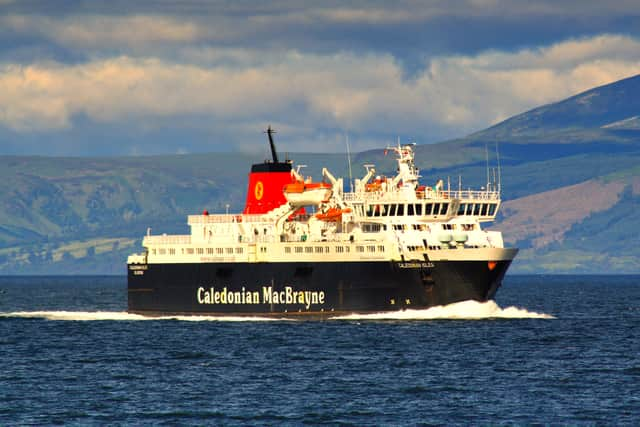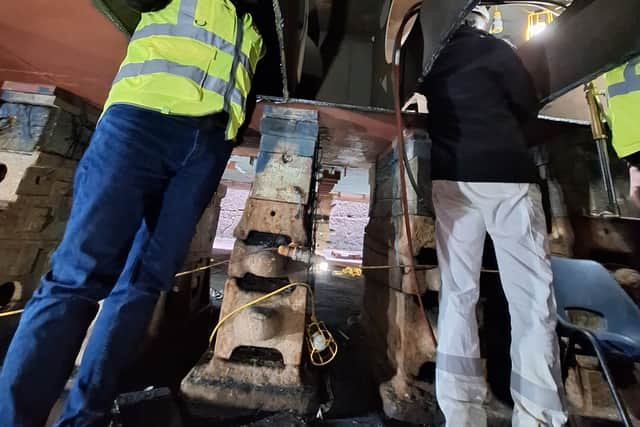CalMac ferry Caledonian Isles repairs completion delayed another two months to August
Major repairs to the main ferry on CalMac’s busiest route will take a further two months because its engines will have to be removed to finish the work.
Completion of the replacement of poor-condition steel in Caledonian Isles has been pushed back from June to the end of August, with the estimated £5 million cost to increase.
Advertisement
Hide AdAdvertisement
Hide Ad

Confirmation of the delay comes as a second blow to Arran within days after the Ferguson Marine shipyard announced on Friday the first of the island’s two long-delayed new ferries would be completed another two months’ late.
It means Glen Sannox will not be delivered until the end of July and is unlikely to be carrying passengers on the Troon-Brodick route until October.


The latest setbacks follow significant disruption to the ferry link over the past two years by vessel breakdowns, which was followed this year by deterioration of one of the berths in Ardrossan harbour forcing some sailings to be switched to Troon.
That has increased crossing times and reduced service frequency.
The route is being covered by CalMac’s Isle of Arran ferry from Ardrossan - or Troon during strong easterly winds - and the Alfred catamaran from Troon, chartered from Pentland Ferries in Orkney.
The steelwork problem in the bowels of Caledonian Isles was discovered in January during its annual overhaul, which should have taken a month.
The loss of steelwork thickness has been attributed to the 31-year age of the vessel, which had not been scheduled to be in service for so long.
However, access difficulties have increased the time taken to assess the extent of repairs needed, with engineers having to crawl through 2ft-wide gaps to reach parts of the hull.
Advertisement
Hide AdAdvertisement
Hide AdCalMac fleet management director Craig Ramsay told The Scotsman: “As we got further into these spaces - further into the maze - we knew there was a high probability of finding more.
“The big risk that’s hung over us has been the possibility of having to remove the main engines for access.
“The working assumption was that we could find an option to make repair below the main engines that would have allowed us to leave them in place.
“However, when we looked at work in that area in detail, what’s become apparent is that we need to move both main engines.”
Mr Ramsay said that carried “significant risk” as it involved disturbing equipment in place since the ferry was built in 1993.
He said: “The timeline now looks like a return of the vessel rather than within June, probably now within August.”
Bill Calderwood, secretary of the official Arran Ferry Committee, said: “This will have significant impact to the island’s capacity. We have called for urgent talks with CalMac to discuss how they plan to cover demand in the peak visitor period.
“We will also be asking for reviews of all other possible options to provide Arran with capacity to meet the demand for this popular destination.”
Advertisement
Hide AdAdvertisement
Hide AdCalMac interim chief executive Duncan Mackison said: “We know this news is disappointing, particularly for people on Arran.
“We issued a revised summer timetable when we knew Caledonian Isles would be unavailable for a significant period of time.
“That timetable will remain in place until she is ready to return, though we will continue to explore what we can do to support the service.“
Comments
Want to join the conversation? Please or to comment on this article.